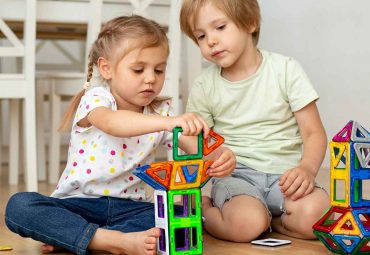Occupational Therapy
Our Occupational Therapy (OT) staff provide treatment with sensory motor and developmental approaches. Treatment programs focus on improving functional independence through visual-perceptual, fine motor, upper extremity strength and coordination, sensory integration, oral-motor, feeding, and self-help activities. Our skilled OTs consistently pursue training in handwriting, sensory integration, feeding, NDT, adaptive equipment, interactive metronome, and therapeutic listening interventions. Common diagnoses treated in OT include cerebral palsy, motor incoordination, ADHD, autism spectrum disorders (ASD), down syndrome, and sensory integrative dysfunction. Our large sensory gyms are fully equipped to facilitate improvement in developmental milestones and sensory processing skills, within a therapeutic play approach.


Sensory integration helps people “make sense” of the world around them. Sensory integration is the process of using our senses to take in and organize sensory information for success in everyday activities.
Many people think of occupational therapy as something that is only for adults, but children can benefit from OT as well. Kids don’t have “occupations” in a traditional way, but playing is the job of children. Occupational therapy involves helping people with activities they need and want to do every day including self care skills (feeding, dressing, grooming, etc.) playing and communicating, and being part of their family.
Occupational therapy goals include therapists enabling children to be able to do what they need and want to do: get dressed, ride a bike, make friends, perform tasks in class and learn at school. Occupational therapists are trained to assess how children use sensory integration, including any atypical sensory seeking or avoiding behaviors.

